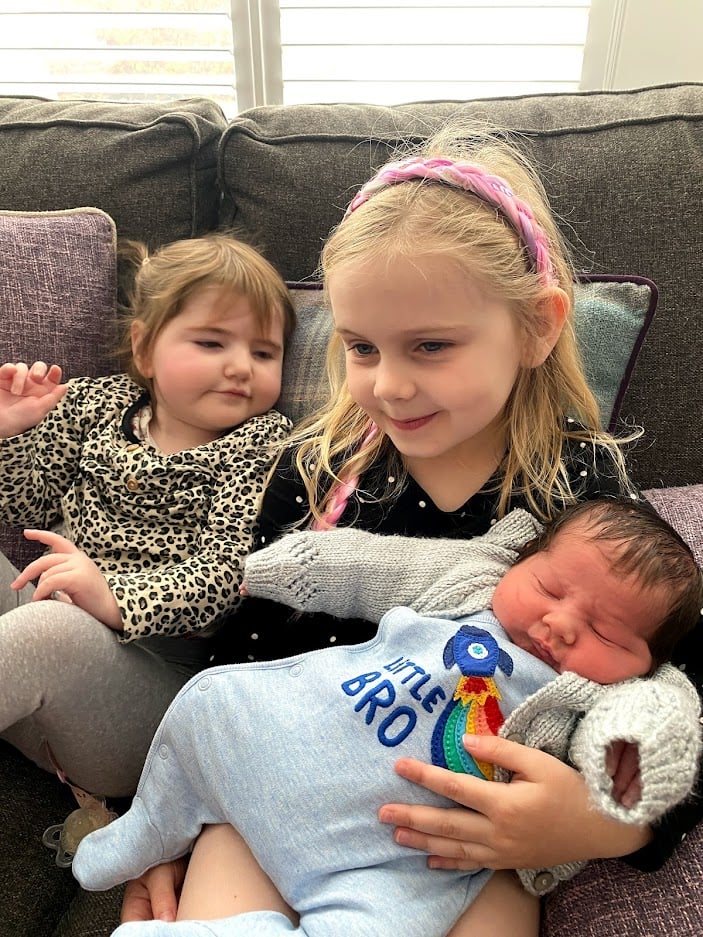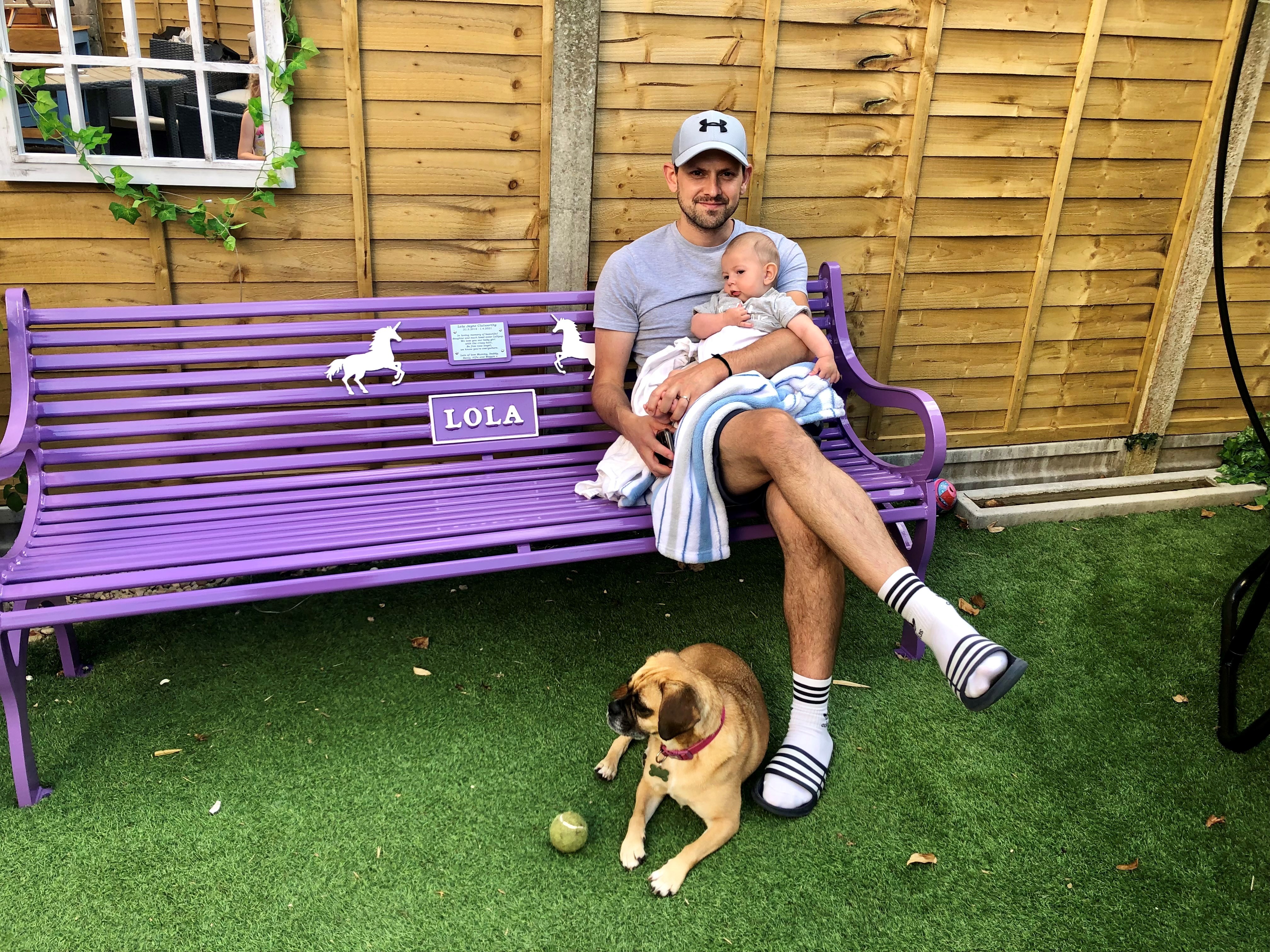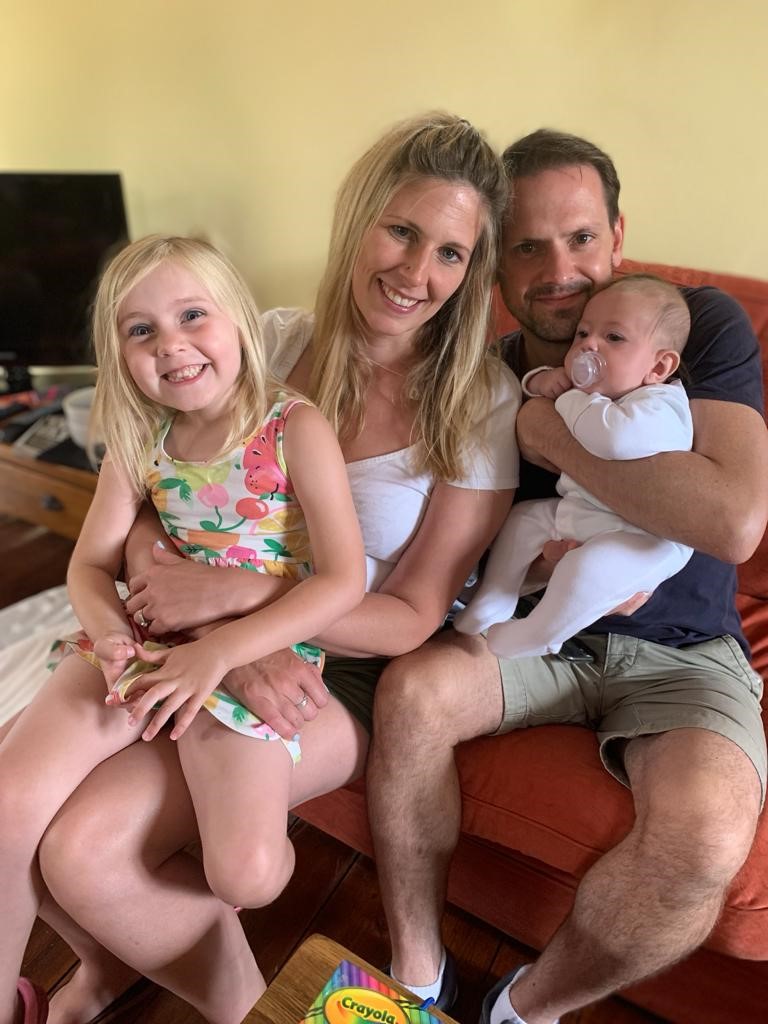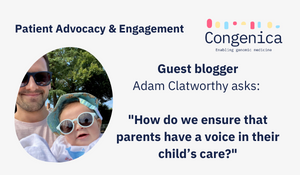We welcome the return of guest blogger Adam Clatworthy, who talks about the importance of parents and patients - who are experts in the complex conditions and symptoms of rare diseases that they live with - working together with clinicians to help deliver diagnoses.
How do we ensure that parents have a voice in their child’s care?
It was late one evening back in May 2019 and I was doing what most other parents do when they’re scared about the health of their child... I was scanning Facebook groups looking for help. I was overwhelmed by so many questions and concerns after our daughter Lola started having multiple types of seizures at just three months old. You can learn more about Lola’s story here.
_children_kiss.jpg?width=677&name=Adam_clatworthy(epilepsy)_children_kiss.jpg)
That night I made the tough decision to post a video of one of Lola’s seizures in one of the many epilepsy groups I’d joined. By some miracle, a wonderful lady from Canada called Katie checked her Facebook that day –something that she only did occasionally. Katie sent me a message as she was convinced that Lola’s episodes were remarkably similar to her son, Levi’s.
Katie’s son Levi, and her late daughter Hayden (who had sadly passed away at just 22 months) were both diagnosed with a super rare CRELD1 gene mutation that is typically associated with heart defects. While we had no scientific grounding to base these concerns on, other than similarity of developmental delay and seizure presentation, we started to do our own research on this condition.
Lola and big sister Daisy
Every time we saw a neurologist or geneticist, we asked them to look into this CRELD1 gene mutation. We were told on numerous occasions that they had run every possible genetic test available to Lola. This was particularly important for us as we’d made the tough decision to have another child, and we wanted to be absolutely sure that there was no risk that another child would have the same condition.
We were told that the chances of having another child like Lola were “like being struck by lightning.” Lola was later entered into the 100,000 Genomes Project in the hope that we’d be able to find a diagnosis and get clarity on the treatments that would help her. The timeline for this analysis was several months, and we understood that it was “highly unlikely we would ever find anything that would lead to a diagnosis.”

Lola, big sister Daisy and Alfie
Our son Alfie was born in March this year, which felt like a ray of sunshine on our family after years of cloud. However, when he turned five days old, our worst fears were realised when Lola passed away peacefully in her sleep.
There would have been many times in her life when this would not have been a shock, after all the many viruses, seizures and infections she’d had to endure throughout her short life. But she’d actually been seizure-free for five weeks before she passed away thanks to a course of steroids. This drug had literally been like a switch that turned her relentless seizures off.
Had everything with Alfie been ok, we may never have progressed with finding a diagnosis for Lola, and upon an extensive post-mortem, her cause of death was put down to SUDEP (sudden unexpected death in epilepsy). Even more devastating to us, Alfie started having the same seizures as Lola when he reached three months old. This really raised alarm bells for us, as we knew from speaking to Katie that this CRELD1 mutation can occur in siblings.
We were crushed. From this moment we couldn’t let it lie. As soon as we could, we picked up the phone to Katie to find out more about their journey as we’d always felt there was a strong connection between Lola and Hayden. After speaking we found out just how similar our journey had been. It seriously felt like we were living the same lives. We both had daughters that had passed away at a similar age with the same developmental delay and seizures. We both had a perfectly healthy daughter of similar age, and we both had a son that had also shown developmental delay and seizure presentation from three months.
Shortly after our hospital visit with Alfie’s first seizure, Lola’s full exome sequencing was finally completed, but didn’t come back with any further insights. At this point I asked the geneticist about CRELD1 again. We provided a raft of information that we’d gathered from talking with Katie over the years, along with contact details for their geneticist and neurologists in Canada. We also provided details for a genetic testing company that is running a study into the CRELD1 mutation.
The next day we received a response to say that they had gone back to Lola’s sequencing and had in fact identified changes in CRELD1. They now think it is highly likely that this mutation is what caused the issues for Lola and they want to do further scientific research to prove this and publish in the medical literature, to avoid missing other potential diagnoses. Alfie is now being tested for the same.

Adam and Alfie
The geneticist said it’s the first time in her career that a family has used their own knowledge and investigations to help diagnose a rare disease condition and without that information they may not have analysed the CRELD1 gene.
“It shows how much parents can help us in rare conditions.”
For us, this is immensely important. When you think about how much time a doctor, neurologist or geneticist can physically spend with a patient, there is no way that they can fully understand their complex condition or symptoms. We often don’t have the academia or scientific background, but as parents we live with and learn from our children every second of every day.
Sadly, our knowledge and research were unable to provide a timely diagnosis for Lola and for this reason we believe it is imperative that parents’ and patients’ voices are heard and that there is more dialogue with healthcare professionals.
Thanks to Katie, and the power of parent groups, it looks like we may have finally found our diagnosis, but it really shouldn’t be like this.
We know that a diagnosis doesn’t give us any clarity on effective treatment for Alfie, especially as this is such a rare and unknown condition. We are only aware of seven other families –all based in the U.S. –that have been diagnosed. To date, there is no effective treatment; however, as a network of parents that are all going through the same challenges, we can focus on identifying the right treatment options, rather than testing multiple drugs that we have no idea will work.
It also means that that we can help make the connections and ensure that the UK and U.S. can learn from each other and share information with other potentially undiagnosed children that are suffering with the same challenges across the world.
While our lives have been thrown into turmoil again, we’re very lucky that we now have a neurologist that listens to us and wants to learn from our experiences with Lola, and we know that this is what led to us finding a successful treatment for Lola.

Daisy, mum Jess, Alfie and dad Adam
Patient Advocacy and Engagement at Congenica
A desire to improve the lives of people living with rare and inherited diseases is central to everything we do at Congenica, and our patient advocacy and engagement initiative aims to ensure the patient voice is heard loud and clear inside the company.
We also want to help patients navigate often confusing and disparate information by providing educational materials that are trustworthy and helpful. Our aim is to ensure patients, clinicians and researchers understand the patient journey from referral, through diagnosis and beyond.
We strive to help ensure all parties understand the strengths and current limitations of genomic medicine as well as ensuring we work together to realize the full benefits that the genomic revolution promises.
To keep up to date with our news, including the latest blogs, sign up to our Patient Advocacy and Engagement newsletter.


.png?width=320&height=192&name=Untitled%20design%20(8).png)
.png?width=320&height=192&name=Since%202016%2c%20the%20number%20of%20women%20working%20in%20STEM%20fields%20in%20the%20UK%20has%20increased%20by%20216%2c552%2c%20taking%20the%20total%20number%20over%20the%201%20million%20mark%20for%20the%20first%20time.%20Women%20now%20make%20up%2024%25%20of%20the%20STEM%20workforce%20i%20(2).png)
-1.png?width=320&height=192&name=Deciphering%20Developmental%20Disorders%20(1)-1.png)